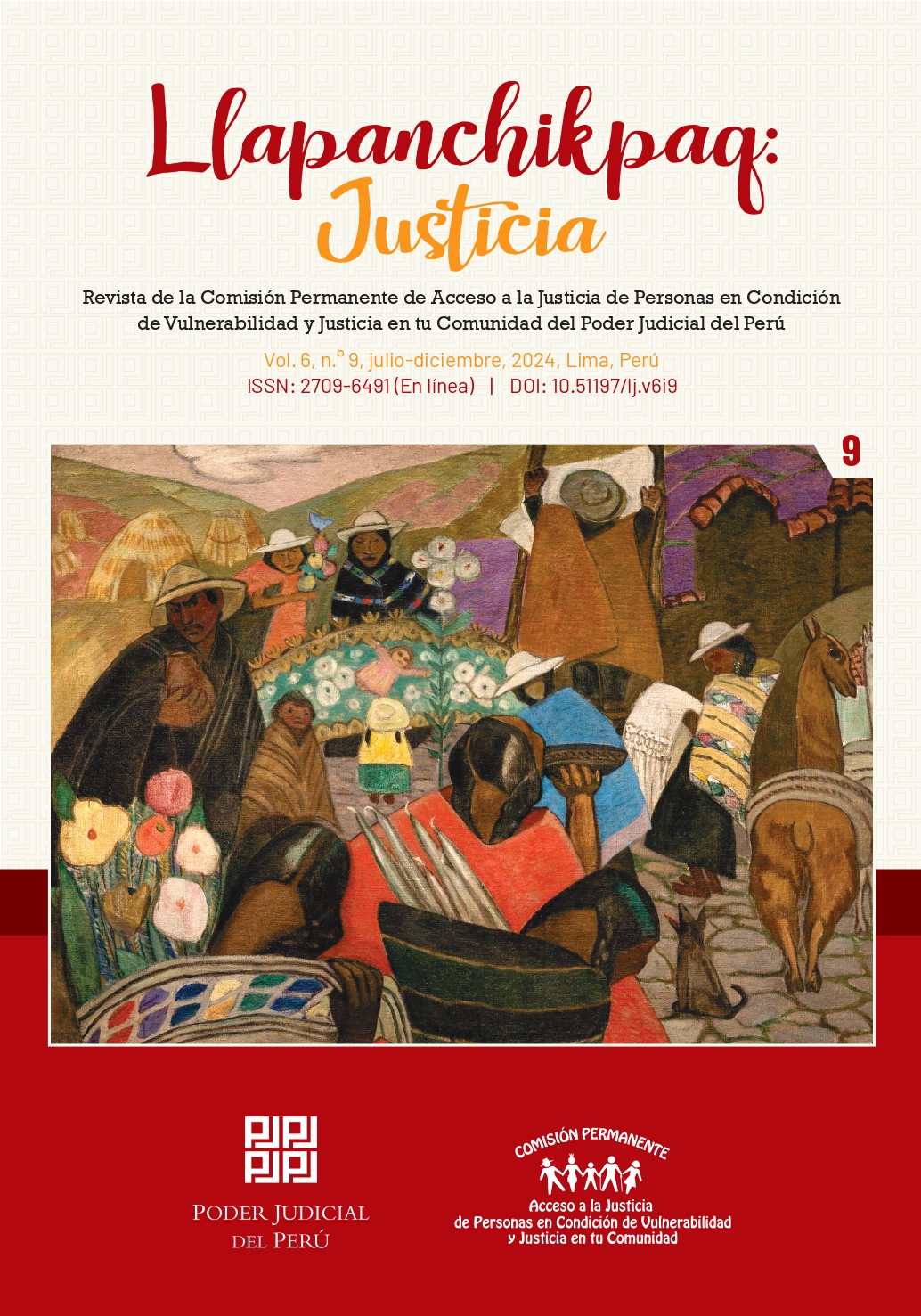The Human Right to Decent Housing and the Possibilities of Access to Justice for its Protection in Favor of Vulnerable Sectors
Abstract
The best criterion to understand the importance of the right to adequate housing or decent housing is its legal foundations. The problem is that a lot of ink has been spilled by lawyers and judges without distinguishing that when it comes to human rights such as decent housing, there are two types of foundations: visible foundations and invisible foundations. The first has to do with the international and national regulatory framework; while the latter have to do with the moral weight that said regulatory framework has. In the present work, the visible foundations are preeminently exposed, and a preliminary outline of the invisible foundations is left.
Downloads
Metrics
References
Atienza, M. (2013). Podemos hacer más: Otra forma de pensar el derecho. http://www.pasosperdidos.org/libros/pdf27.pdf
Burgos, Á. (2014). El acceso a la justicia de grupos en condición de vulnerabilidad y las reglas de Brasilia. En Chan Mora, G. y Llobet, J. (coords.), Homenaje al prof. Dr. Francisco Castillo González en sus 70 años (pp. 327361). https://dialnet.unirioja.es/servlet/articulo?codigo=4765784
Congreso de la República del Perú (1993). Diarios de Debates del Congreso de la República. https://repositorio.bicentenario.gob.pe/handle/20.500.12934/264
Corte Suprema de Justicia de la Nación Argentina (2012). Q. C., S. Y. c/ Gobierno de la Ciudad de Buenos Aires s/ amparo. SAIJ. http://www.saij.gob.ar/cortesupremajusticianacionfederalciudadautonomabuenosairesgobiernociudadbuenosairesamparofa1200004520120424/12345678954000021otseupmocsollaf#
Derrida, J. (1997). Fuerza de ley: el «fundamento místico de la autoridad». (Gómez, P. y Barberá, A., trads.). Tecnos. https://dialnet.unirioja.es/servlet/libro?codigo=207912
Dworkin, R. (2019). El Derecho de las libertades: La lectura moral de la Constitución Norteamericana. Palestra. https://palestraeditores.com/producto/elderechodelaslibertades/
Naciones Unidas, Asamblea General (2019). El acceso a la justicia para la defensa del derecho a la vivienda. Consejo de Derechos Humanos 40 periodos de sesiones, 25 de febrero a 22 de marzo de 2019. https://documentsddsny.un.org/doc/UNDOC/GEN/G19/007/32/PDF/G1900732.pdf?OpenElement
Organización Internacional del Trabajo (1961). R115Recomendación sobre la vivienda de los trabajadores (115). https://normlex.ilo.org/dyn/normlex/es/f?p=NORMLEXPUB:12100:0::NO::P12100_INSTRUMENT_ID:312453
Pisarello Prados, G. (2003). Vivienda para todos. Un derecho en (de) construcción: el derecho a una vivienda digna y adecuada como derecho exigible. Icaria. https://dialnet.unirioja.es/servlet/libro?codigo=43224
Poder Judicial (1979). Constituciones del Perú. https://www.pj.gob.pe/wps/wcm/connect/cijjuris/s_publicaciones_juriprudencia_new/as_normatividad/as_constituciones
Ribotta, S. (2012). Reglas de Brasilia sobre acceso a la justicia de las personas en condición de vulnerabilidad. Vulnerabilidad, pobreza y acceso a la justicia. REIB: Revista Electrónica Iberoamericana, 6(2), 77114. https://www.cijc.org/pt/seminarios/2019CartagenaIndias/Documentos%20CIJC/Documento%20de%20estudio%208_Comentarios%20a%20las%20Reglas%20de%20Brasilia_Silvina% 20 Ribotta_entregable.pdf
Rodríguez Tirado, A. M. (2024). La Ley por el derecho a la vivienda y la vulnerabilidad económicosocial en los procesos arrendaticios de desahucio de vivienda habitual por falta de pago: ODS y Reglas de Brasilia. La Ley Derecho de Familia: Revista jurídica sobre familia y menores, 41, 560584. https://dialnet.unirioja.es/servlet/articulo?codigo=9326321
Rojas Dávila, R. (2019). Introducción a la Convención Interamericana sobre la Protección de los Derechos Humanos de las Personas Mayores: Un aporte jurídico de las Américas para el mundo. En Tello Gilardi, J. y Calderón Puertas, C. (comps.), Reglas de Brasilia. Por una justicia sin barreras. (pp. 159168). Fondo Editorial del Poder Judicial. https://www.pj.gob.pe/wps/wcm/connect/fondoeditorial/s_fondoe/as_colecciones/as_derecho_accesoalajusticia/fe_f_reglas_de_brasilia._por_una_justicia_sin_barreras
Tribunal Constitucional (2011). Expediente n.o 000112010AI. https://www.tc.gob.pe/jurisprudencia/2011/000112010AI.html
United Nations (1948). La Declaración Universal de los Derechos Humanos | Naciones Unidas. https://www.un.org/es/aboutus/universaldeclarationofhumanrights
United Nations (1965). Convención Internacional sobre la Eliminación de todas las Formas de Discriminación Racial. OHCHR. https://www.ohchr.org/es/instrumentsmechanisms/instruments/internationalconventioneliminationallformsracial
United Nations (1969). Declaración sobre el progreso y el desarrollo en lo social. OHCHR. https://www.ohchr.org/es/instrumentsmechanisms/instruments/declarationsocialprogressanddevelopment
United Nations (1976a). Conferencia de las Naciones Unidas sobre los Asentamientos HumanosHábitat I | Naciones Unidas. https://www.un.org/es/conferences/habitat/vancouver1976
United Nations (1976b). Pacto Internacional de Derechos Económicos, Sociales y Culturales. OHCHR. https://www.ohchr.org/es/instrumentsmechanisms/instruments/internationalcovenanteconomicsocialandculturalrights
United Nations (1979). Convención sobre la eliminación de todas las formas de discriminación contra la mujer. OHCHR. https://www.ohchr.org/es/instrumentsmechanisms/instruments/conventioneliminationallformsdiscriminationagainstwomen
United Nations (1986). Declaración sobre el derecho al desarrollo. OHCHR. https://www.ohchr.org/es/instrumentsmechanisms/instruments/declarationrightdevelopment
United Nations (1989). Convención sobre los Derechos del Niño. OHCHR. https://www.ohchr.org/es/instrumentsmechanisms/instruments/conventionrightschild
United Nations (2009). Annual thematic reports. OHCHR. https://www.ohchr.org/en/specialprocedures/srhousing/annualthematicreports
United Nations (2019). Relator Especial sobre el derecho a una vivienda adecuada. OHCHR. https://www.ohchr.org/es/specialprocedures/srhousing
United Nations (2020). Mr. Balakrishnan Rajagopal. OHCHR. https://www.ohchr.org/en/specialprocedures/srhousing/mrbalakrishnanrajagopal
Copyright (c) 2024 Joel Emerson Huancapaza Hilasaca

This work is licensed under a Creative Commons Attribution 4.0 International License.
The authors retain their copyrights and register under the Creative Commons Attribution 4.0 International License (CC BY 4.0), which allows the use of the published material (adapt - remix, transform and build - and share - copy and redistribute - the material in any medium or format).
a. The journal allows authors to retain their copyright of submitted articles without any restrictions.
b. Authors retain the right to share, distribute, copy, perform and publicly communicate the article published in Llapanchipaq Justicia (e.g., place it in an institutional repository).
c. Authors retain the right to make a subsequent publication of their work, to use the article or any part of it (for example: a compilation of their work, notes for conferences, thesis, or for a book), as long as they indicate the source of publication (authors of the work, journal, volume, number and date).
















